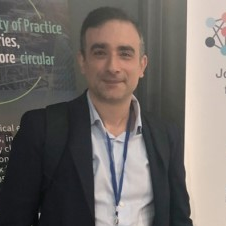Advanced Processes for Industrial Wastewater Treatment
A special issue of Water (ISSN 2073-4441). This special issue belongs to the section "Wastewater Treatment and Reuse".
Deadline for manuscript submissions: closed (25 August 2024) | Viewed by 28175
Special Issue Editors
Interests: wastewater treatment; advanced oxidation processes; advanced processes; desinfection; metals recovery; toxicology; biological processes; water recovery
Interests: ozonation; catalytic ozonation; wastewater treatment; advanced oxidation processes; drinking water treatment; water recovery; photocatalysis
Special Issues, Collections and Topics in MDPI journals
Special Issue Information
Dear Colleagues,
Water scarcity and drought is a real and significant problem throughout the entire world, affecting social and economic activities, and the environment. Water recycling is one of the keys aiming to increase water availability and achieve a smooth adaptation to climate change. Water recycling brings many important benefits such as controlling pollution, limiting the spread of antibiotic-resistant genes and emerging pollutants, maintaining biodiversity and improving the adaptation and resilience of urban and rural communities to climate change. As is already done in some countries, it is necessary to include recycled water in water management plans. Such plans must include all the information on treatment processes and associated costs, quality and quantity of reused water and where it can be used (e.g., irrigation or recreational activities) for the communities benefit. Considering the problems associated with industrial wastewaters, the main objective of this Special Issue is to understand the role of novel and advanced treatment technologies for industrial effluents with different characteristics aiming to achieve the reuse of recoverable water.
Dr. Eva Domingues
Dr. Rui C. Martins
Guest Editors
Manuscript Submission Information
Manuscripts should be submitted online at www.mdpi.com by registering and logging in to this website. Once you are registered, click here to go to the submission form. Manuscripts can be submitted until the deadline. All submissions that pass pre-check are peer-reviewed. Accepted papers will be published continuously in the journal (as soon as accepted) and will be listed together on the special issue website. Research articles, review articles as well as short communications are invited. For planned papers, a title and short abstract (about 250 words) can be sent to the Editorial Office for assessment.
Submitted manuscripts should not have been published previously, nor be under consideration for publication elsewhere (except conference proceedings papers). All manuscripts are thoroughly refereed through a single-blind peer-review process. A guide for authors and other relevant information for submission of manuscripts is available on the Instructions for Authors page. Water is an international peer-reviewed open access semimonthly journal published by MDPI.
Please visit the Instructions for Authors page before submitting a manuscript. The Article Processing Charge (APC) for publication in this open access journal is 2600 CHF (Swiss Francs). Submitted papers should be well formatted and use good English. Authors may use MDPI's English editing service prior to publication or during author revisions.
Keywords
- water recycling
- industrial wastewater
- advanced technologies
- toxicology, disinfection
Benefits of Publishing in a Special Issue
- Ease of navigation: Grouping papers by topic helps scholars navigate broad scope journals more efficiently.
- Greater discoverability: Special Issues support the reach and impact of scientific research. Articles in Special Issues are more discoverable and cited more frequently.
- Expansion of research network: Special Issues facilitate connections among authors, fostering scientific collaborations.
- External promotion: Articles in Special Issues are often promoted through the journal's social media, increasing their visibility.
- Reprint: MDPI Books provides the opportunity to republish successful Special Issues in book format, both online and in print.
Further information on MDPI's Special Issue policies can be found here.






